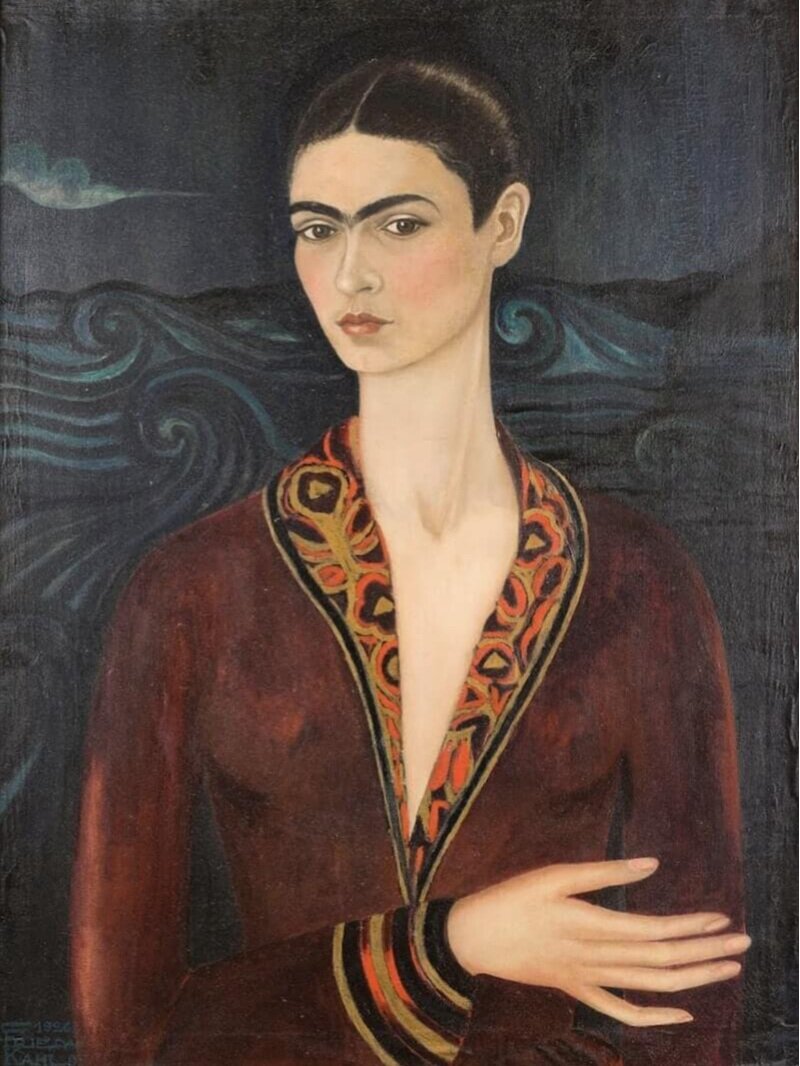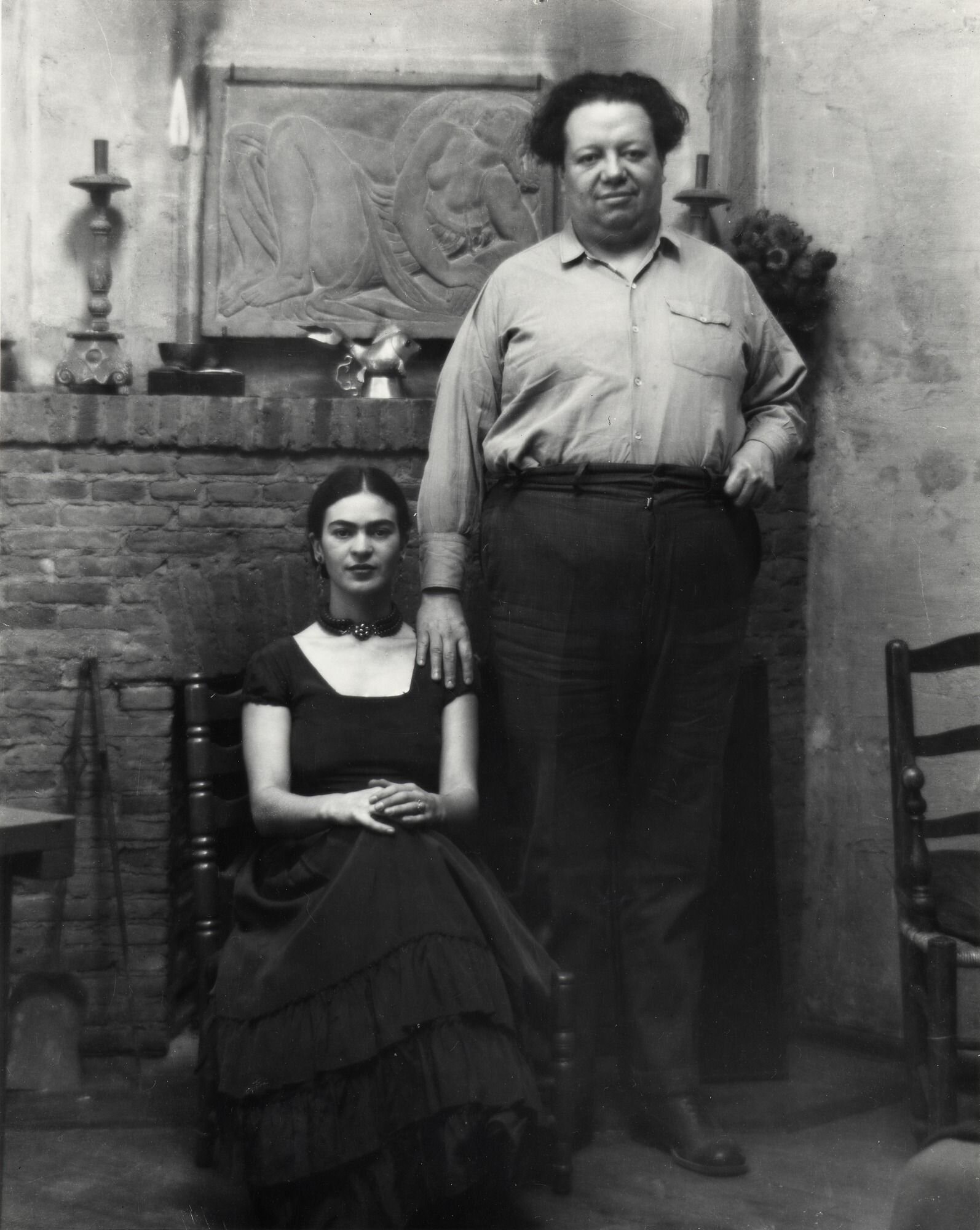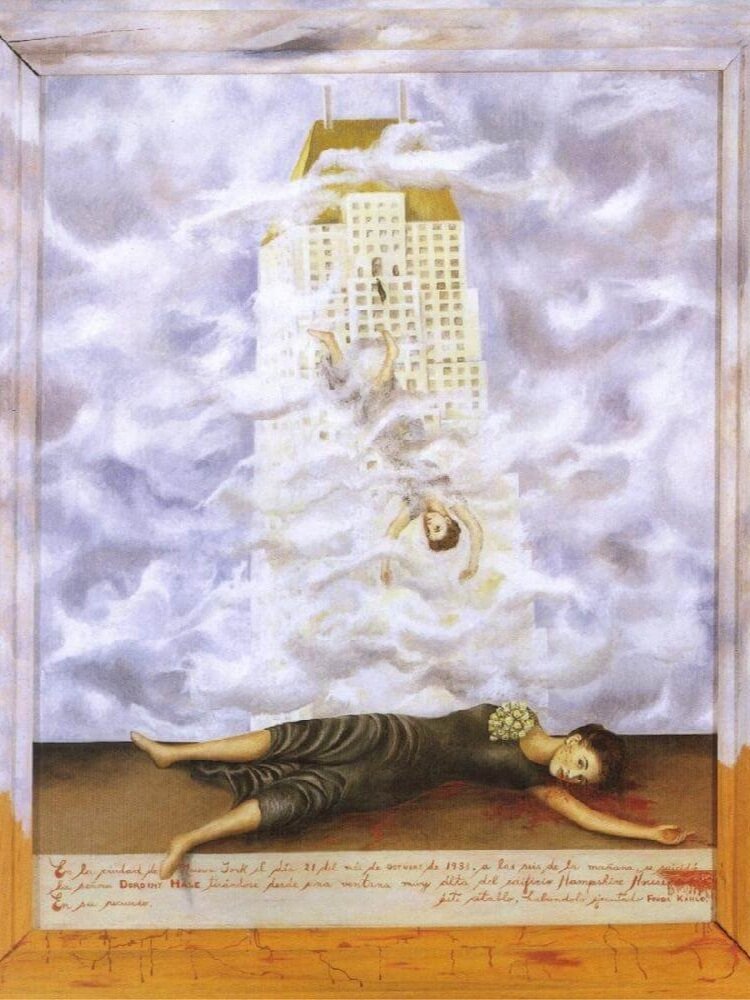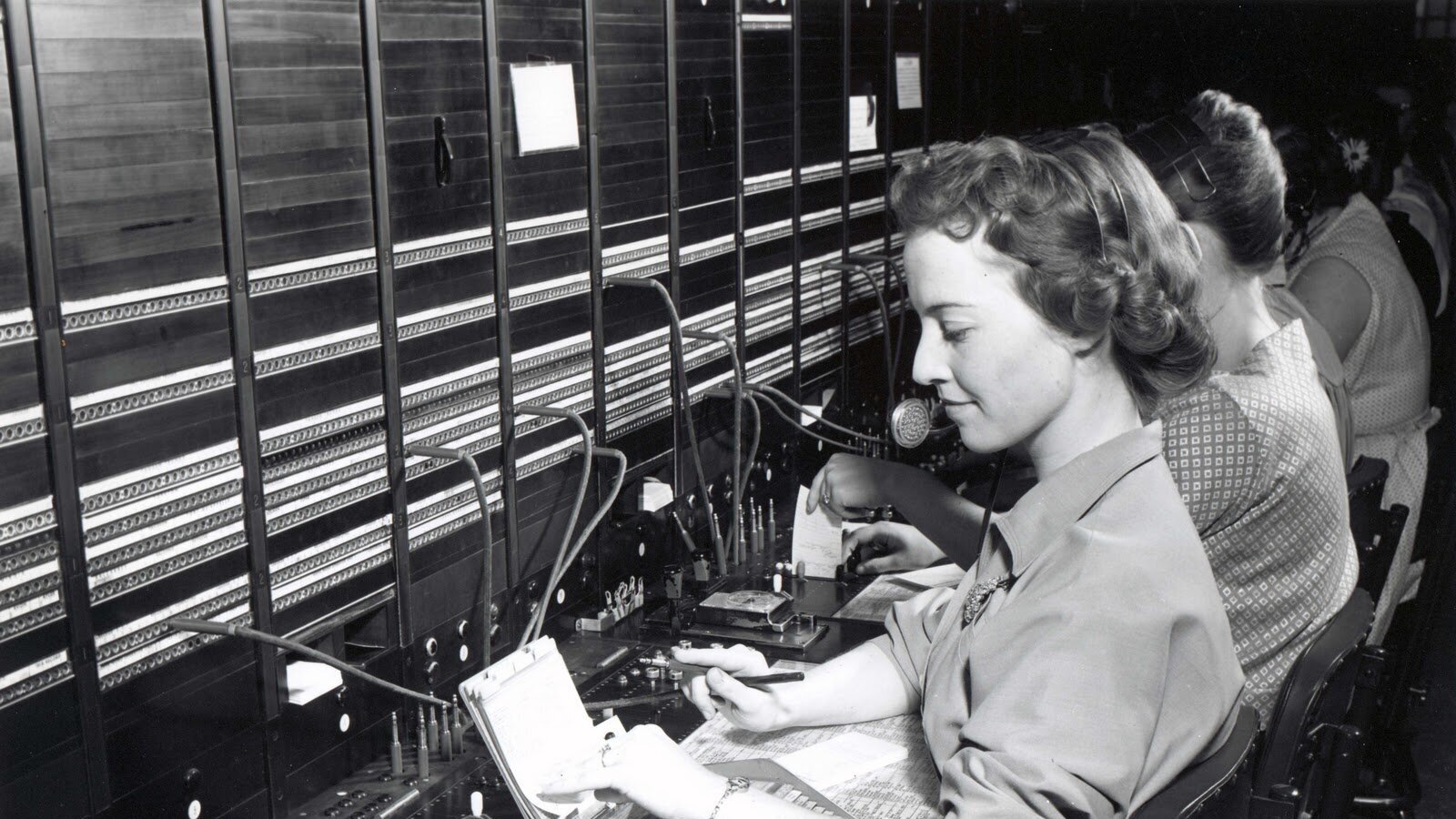
STAGE NOTES
The WICA Blog
BIOGRAPHY | Frida Kahlo
Frida Kahlo was considered one of Mexico's greatest artists who began painting mostly self-portraits after she was severely injured in a bus accident. Kahlo later became politically active and married fellow communist artist Diego Rivera in 1929. She exhibited her paintings in Paris and Mexico before her death in 1954.
Family, Education and Early Life
Kahlo was born Magdalena Carmen Frieda Kahlo y Calderón on July 6, 1907, in Coyoacán, Mexico City, Mexico.
Kahlo's father, Wilhelm (also called Guillermo), was a German photographer who had immigrated to Mexico where he met and married her mother Matilde. She had two older sisters, Matilde and Adriana, and her younger sister, Cristina, was born the year after Kahlo.
Around the age of six, Kahlo contracted polio, which caused her to be bedridden for nine months. While she recovered from the illness, she limped when she walked because the disease had damaged her right leg and foot. Her father encouraged her to play soccer, go swimming, and even wrestle — highly unusual moves for a girl at the time — to help aid in her recovery.
In 1922, Kahlo enrolled at the renowned National Preparatory School. She was one of the few female students to attend the school, and she became known for her jovial spirit and her love of colorful, traditional clothes and jewelry.
While at school, Kahlo hung out with a group of politically and intellectually like-minded students. Becoming more politically active, Kahlo joined the Young Communist League and the Mexican Communist Party.
Frida Kahlo's Accident
Self Portrait in a Velvet Dress, 1926
On September 17, 1925, Kahlo and Alejandro Gómez Arias, a school friend with whom she was romantically involved, were traveling together on a bus when the vehicle collided with a streetcar. As a result of the collision, Kahlo was impaled by a steel handrail, which went into her hip and came out the other side. She suffered several serious injuries as a result, including fractures in her spine and pelvis.
After staying at the Red Cross Hospital in Mexico City for several weeks, Kahlo returned home to recuperate further. She began painting during her recovery and finished her first self-portrait the following year, which she gave to Gómez Arias.
Frida Kahlo's Marriage to Diego Rivera
In 1929, Kahlo and famed Mexican muralist Diego Rivera married. Kahlo and Rivera first met in 1922 when he went to work on a project at her high school. Kahlo often watched as Rivera created a mural called The Creation in the school’s lecture hall. According to some reports, she told a friend that she would someday have Rivera’s baby.
Kahlo reconnected with Rivera in 1928. He encouraged her artwork, and the two began a relationship. During their early years together, Kahlo often followed Rivera based on where the commissions that Rivera received were. In 1930, they lived in San Francisco, California. They then went to New York City for Rivera’s show at the Museum of Modern Art and later moved to Detroit for Rivera’s commission with the Detroit Institute of Arts.
Kahlo and Rivera’s time in New York City in 1933 was surrounded by controversy. Commissioned by Nelson Rockefeller, Rivera created a mural entitled “Man at the Crossroads” in the RCA Building at Rockefeller Center. Rockefeller halted the work on the project after Rivera included a portrait of communist leader Vladimir Lenin in the mural, which was later painted over. Months after this incident, the couple returned to Mexico and went to live in San Angel, Mexico.
Never a traditional union, Kahlo and Rivera kept separate, but adjoining homes and studios in San Angel. She was saddened by his many infidelities, including an affair with her sister Cristina. In response to this familial betrayal, Kahlo cut off most of her trademark long dark hair. Desperately wanting to have a child, she again experienced heartbreak when she miscarried in 1934.
Kahlo and Rivera went through periods of separation, but they joined together to help exiled Soviet communist Leon Trotsky and his wife Natalia in 1937. The Trotskys came to stay with them at the Blue House (Kahlo's childhood home) for a time in 1937 as Trotsky had received asylum in Mexico. Once a rival of Soviet leader Joseph Stalin, Trotsky feared that he would be assassinated by his old nemesis. Kahlo and Trotsky reportedly had a brief affair during this time.
Kahlo divorced Rivera in 1939. They did not stay divorced for long, remarrying in 1940. The couple continued to lead largely separate lives, both becoming involved with other people over the years.
ARTISTIC CAREER
The Suicide of Dorothy Hale, 1938
While she never considered herself a surrealist, Kahlo befriended one of the primary figures in that artistic and literary movement, Andre Breton, in 1938. That same year, she had a major exhibition at a New York City gallery, selling about half of the 25 paintings shown there. Kahlo also received two commissions, including one from famed magazine editor Clare Boothe Luce (The Suicide of Dorothy Hale), as a result of the show.
In 1939, Kahlo went to live in Paris for a time. There she exhibited some of her paintings and developed friendships with such artists as Marcel Duchamp and Pablo Picasso.
Kahlo received a commission from the Mexican government for five portraits of important Mexican women in 1941, but she was unable to finish the project. She lost her beloved father that year and continued to suffer from chronic health problems. Despite her personal challenges, her work continued to grow in popularity and was included in numerous group shows around this time.
In 1953, Kahlo received her first solo exhibition in Mexico. While bedridden at the time, Kahlo did not miss out on the exhibition’s opening. Arriving by ambulance, Kahlo spent the evening talking and celebrating with the event’s attendees from the comfort of a four-poster bed set up in the gallery just for her.
After Kahlo’s death, the feminist movement of the 1970s led to renewed interest in her life and work, as Kahlo was viewed by many as an icon of female creativity.
KAHLO’S DEATH
About a week after her 47th birthday, Kahlo died on July 13, 1954, at her beloved Blue House. There has been some speculation regarding the nature of her death. It was reported to be caused by a pulmonary embolism, but there have also been stories about a possible suicide.
Kahlo’s health issues became nearly all-consuming in 1950. After being diagnosed with gangrene in her right foot, Kahlo spent nine months in the hospital and had several operations during this time. She continued to paint and support political causes despite having limited mobility. In 1953, part of Kahlo’s right leg was amputated to stop the spread of gangrene.
Deeply depressed, Kahlo was hospitalized again in April 1954 because of poor health, or, as some reports indicated, a suicide attempt. She returned to the hospital two months later with bronchial pneumonia. No matter her physical condition, Kahlo did not let that stand in the way of her political activism. Her final public appearance was a demonstration against the U.S.-backed overthrow of President Jacobo Arbenz of Guatemala on July 2, 1954.
SOURCE: Biography
What Is Public Opinion Polling and Why Is It Important?
What's a public opinion poll?
A scientific, nonbiased public opinion poll is a type of survey or inquiry designed to measure the public's views regarding a particular topic or series of topics. Trained interviewers ask questions of people chosen at random from the population being measured. Responses are given, and interpretations are made based on the results. It is important in a random sample that everyone in the population being studied has an equal chance of participating. Otherwise, the results could be biased and, therefore, not representative of the population. Representative samples are chosen in order to make generalizations about a particular population being studied.
Why are opinion polls important?
Polls tell us what proportion of a population has a specific viewpoint. They do not explain why respondents believe as they do or how to change their minds. This is the work of social scientists and scholars. Polls are simply a measurement tool that tells us how a population thinks and feels about any given topic.
This can be useful in helping different cultures understand one another because it gives the people a chance to speak for themselves instead of letting only vocal media stars speak on behalf of all. Opinion polling gives people who do not usually have access to the media an opportunity to be heard.
How are the surveys conducted?
Two of the most common ways in which public opinion polls are conducted are telephone and face-to-face interviews. Other methods include mail, online, and self-administered surveys.
How are face-to-face samples selected?
Such surveys, also known as “in-person” interviews, are conducted with the interviewer and the interviewee next to each other. The interviewer reads material from the questionnaire and records the interviewee’s responses. At times the interviewer may hand a card to the respondent for him/her to select a response(s).
Scientific face-to-face surveys are normally conducted using geographic-area probability sampling. Some refer to this as “block sampling.” This is done by dividing a given population into blocks of roughly equal population density. Each block is further divided into blocks until a single household is chosen at random, and then a single respondent is randomly chosen from the household.
How does one read opinion polls?
Percentages in an opinion poll reflect the proportion of a given population that has a particular response. If the results of a scientific poll claiming a 3-point margin of error say that 30% of Americans like ice cream, this means that if we asked all Americans this question, we would expect between 27% and 33% to say they like ice cream.
How are scientific polls different from other polls?
When a radio or TV station asks its listeners to call in to vote on a particular issue, the results of this activity are not scientific because the sample is not representative. The sample reflects only the people who happen to be watching or listening to the show and are motivated to call in. This cannot be generalized to represent the whole population because the respondents were not randomly selected, and therefore, they are not representative.
RELATED PROGRAMMING: ROBERT MERRY WITH PETER HART | APR 23, 2021
BIOGRAPHY | SAM SHEPARD
The Farmer’s Son
Born in Illinois in 1943, Samuel Shepard Rogers III (known as Steve Rogers as boy) was the son of a former Army pilot and a teacher. His family moved frequently and eventually settled on an avocado farm in Duarte, California. Duarte would become the suburb where True West takes place. Shepard’s father became more alcoholic and nomadic, like the absent father that hovers over True West and other Shepard plays. Shepard worked as a stablehand, an orange picker, and a sheep shearer while attending high school and later studied agriculture at nearby Mt. San Antonio Junior College. He dropped out of school to join a travelling theatre company and eventually moved to New York City.
Rock and Roll Playwright
In New York, 19-year-old Shepard found inspiration in rock, jazz, and Samuel Beckett’s plays. He worked as a waiter at the Village Gate nightclub, shared an apartment with the son of jazz legend Charles Mingus, wrote songs with John Cale and Bob Dylan, and played drums for a rock group called The Holy Modal Rounders. Reflecting on this time, he later told an interviewer, “I got into writing plays because I had nothing else to do. So I started writing to keep from going off the deep end.” In 1964, his first play Cowboys received a favorable review from The Village Voice and launched his theatre career. Informed by Jackson Pollock's abstract expressionism and science fiction, his early plays were poetic and hallucinogenic, often incorporating rock and jazz music. He worked in experimental downtown spaces such as La Mama, Cafe Cino, and the Open Theatre, winning six Obie (off-Broadway) Awards over the next few years. In 1969 he married actress and musician O-Lan Jones, and they remained married until 1983. His passion remained divided between theatre and music, and in 1975 Shepard joined a group of musicians (including Joni Mitchell and Joan Baez) to tour with Dylan’s Rolling Thunder Road.
Playwright-in-Residence
Theatre ultimately won out when Shepard opted to settle in San Francisco as playwright-in-residence at the Magic Theatre in 1975. Over the next 10 years, he wrote his most seminal plays, including Fool for Love, True West, and Buried Child. Shepard recalled his father coming to a performance of the latter play and berating the actors on stage. “He took it personally and he was drunk... he was kicked out and then was readmitted once he confessed to being my father. And then he started yelling at the actors again.” By the mid-1980s, as he reached his forties, Shepard was the second most widely-performed American playwright after Tennessee Williams.
WATCH: REMEMBERING SAM SHEPARD
WATCH: SAM SHEPARD ON HIS FAMILY
The Intrepid Artist-Cowboy
In addition to play-writing, Shepard had a successful career as an actor. His first film role was as a dying farmer in Days of Heaven (1978). He appeared in Lewis Carlino’s Resurrection in 1980. His breakthrough came playing Chuck Yeager in The Right Stuff (1983). Biographer John J. Winters wrote that this role established Shepard’s on-screen persona as “the intrepid artist-cowboy of popular imagination,” which would blur with his writing. Other notable movies include Baby Boom (1987), Steel Magnolias (1989), and the Ethan Hawke Hamlet (2000) in which he played Hamlet’s father. He was last seen as the family patriarch in the 2017 Netflix series “Bloodline.” He also wrote several screenplays, including Wim Wenders’s Paris, Texas (1984 Cannes Film Festival Winner) and Silent Tongue (1994), a Western that he also directed.
A Western Sunset
Sam Shepard and Jessica Lange began a decades-long relationship in 1983 and had two children: Hannah and Samuel Walker. The two broke up in 2009 but did not announce that they had parted ways until 2011.
In 2000, Shephard bought a small farm in Kentucky, where he raised horses, continued writing, and enjoyed a low-profile life. Shepard died in 2017 from complications of amyotrophic lateral sclerosis (ALS), or Lou Gehrig’s disease. He left behind more than 55 plays, two collections of short stories, and a novel.
SOURCE: Roundabout Theatre Company
RELATED PROGRAMMING: CURSE OF THE STARVING CLASS | JUN 11-20, 2021
ABOUT | EINE KLEINE NACHTMUSIK
The real title for this perennial Mozart favourite is Serenade No. 13 in G, although it’s the informal title of 'Eine Kleine Nachtmusik' that has stuck.
The more common name of this landmark work from 1787 comes courtesy of Mozart’s obsessively organised side, a character trait about which we rarely hear. Despite possessing a brain that could remember music with 100% cent precision, Mozart kept a detailed log of everything he’d written, just in case. The title 'Eine Kleine NachtMusik' is what he jotted next to the entry for this particular serenade written for a string quartet with an added double-bass. It’s another piece from his great purple patch. He was just thirty-one years old.
One frustrating by-product of Mozart’s personal catalogue of all his works is that we also know that there were originally five movements of this work, rather than the four that now survive. Oddly enough, Mozart never published 'Eine Kleine Nachtmusik' in his lifetime. It was left up to his widow, Constanze, to sell it in a job lot of his music to a publisher in 1799, presumably to raise much needed cash. It saw public light of day only in 1827, some forty years after it was written.
SOURCE: ClassicFm
RELATED PROGRAMMING | EINE KLEINE NACHTMUSIK
BIOGRAPHY | DAVID LAWRENCE
Jacob Lawrence (1917-2000) was one the most renowned African American artist of his time. Known for producing narrative collections like the Migration Series and War Series, he illustrated the African American experience using vivid colors set against Black and brown figures. He also served as a professor of art at the University of Washington for 15 years.
Early Life and Career
Born in Atlantic City, New Jersey, on September 7, 1917, Jacob Lawrence moved with his parents to Easton, Pennsylvania, at the age of two. After his parents split in 1924, his mother sent him, along with two other siblings, to a foster care facility in Philadelphia, while she looked for work in New York. At 13, Lawrence and his siblings reunited with their mother who was residing in Harlem.
Encouraging him to explore the arts, Lawrence's mother enrolled him at Utopia Children’s Center, which had an after-school art program. Although he dropped out of school at the age of 16, he continued taking classes at the Harlem Art Workshop with under the mentorship of artist Charles Alston and frequently visited the Metropolitan Museum of Art.
'The Migration Series'
In 1937 Lawrence won a scholarship to the American Artists School in New York. When he graduated in 1939, he received funding from the Works Progress Administration Federal Art Project. He had already developed his own style of modernism, and began creating narrative series, painting 30 or more paintings on one subject. He completed his best-known series, Migration of the Negro or simply The Migration Series, in 1941. The series was exhibited at Edith Halpert's Downtown Gallery in 1942, making Lawrence the first African American to join the gallery.
World War II and After
At the outbreak of World War II, Lawrence was drafted into the United States Coast Guard. After being briefly stationed in Florida and Massachusetts, he was assigned to be the Coast Guard artist aboard a troopship, documenting the war experience as he traveled around the world. During this time, he produced close to 50 paintings but all ended up being lost.
'War Series'
When his tour of duty ended, Lawrence received a Guggenheim Fellowship and painted his War Series. He was also invited by Josef Albers to teach the summer session at Black Mountain College in North Carolina. Albers reportedly hired a private train car to transport Lawrence and his wife to the college so they wouldn’t be forced to transfer to the “colored” car when the train crossed the Mason-Dixon Line.
When he returned to New York, Lawrence continued honing his craft but began struggling with depression. In 1949 he admitted himself into Hillside Hospital in Queens, staying for close to a year. As a patient at the facility, he produced artwork that reflected his emotional state, incorporating subdued colors and melancholy figures in his paintings, which was a sharp contrast to his other works.
In 1951, Lawrence painted works based on memories of performances at the Apollo Theater in Harlem. He also began teaching again, first at Pratt Institute and later the New School for Social Research and the Art Students League.
Teaching and Commissions
In 1971 Lawrence accepted a tenured position as a professor at University of Washington in Seattle, where he taught until he retired in 1986. In addition to teaching, he spent much of the rest of his life painting commissions, producing limited-edition prints to help fund nonprofits like the NAACP Legal Defense Fund, the Children’s Defense Fund and the Schomburg Center for Research in Black Culture. He also painted murals for the Harold Washington Center in Chicago, the University of Washington and Howard University, as well as a 72-foot mural for New York City’s Times Square subway station.
Death
Lawrence painted until a few weeks before he died, on June 9, 2000.
SOURCE: Biography








